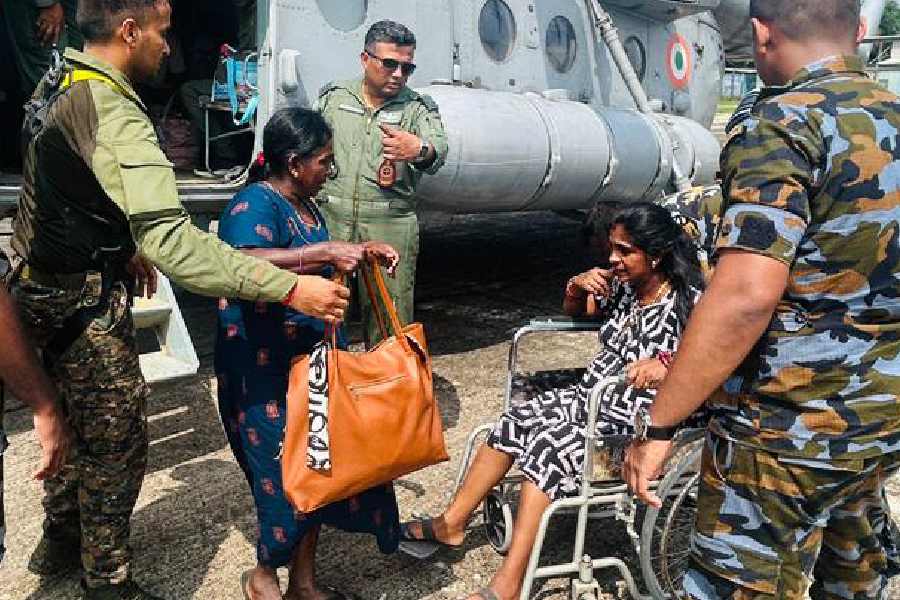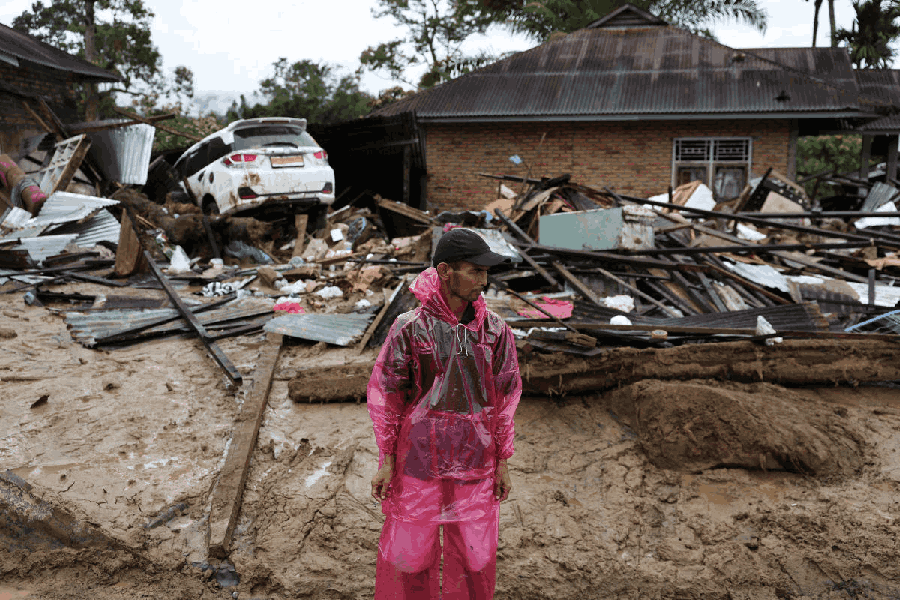 |
| Uttam Vishnu Kadam, a landless villager from Madgyal in Sangli, camping at a cattle camp to guard his cows |
For years, septuagenarian Uttam Vishnu Kadam has heard of canal water reaching his eastern Sangli village from a lift irrigation scheme on the river Krishna.
“I’ve also heard the government is spending a lot of money on it,” he says at a temporary cattle camp in drought-hit Madgyal village where he is camping with his four cows.
But for this camp, he says, his cattle would be dead. “There’s no fodder, no water; no one cares.”
The landless Kadam has seen many droughts but this year’s has been the worst in recent memory. The government has been promising the Krishna’s waters but despite massive spending, it remains a distant dream.
“The government did pour in the money but it got washed away by the river,” Kadam says as listeners giggle.
In the drought zone and elsewhere in Maharashtra, everyone wants to know where the money is going if it isn’t bringing them water. It’s a question even the chief minister is asking.
In early June, Prithviraj Chavan asked his NCP irrigation minister Sunil Tatkare to table a white paper on irrigation showing the expenditure, returns and the money still needed to complete the projects.
Money like water
By 1995, Maharashtra had already tapped 385 thousand million cubic feet (tmc) of the 560tmc that was its share of the Krishna’s waters, awarded by an inter-state tribunal. To create storages for the remaining 175tmc, it kicked off a project estimated to cost Rs 7,100 crore.
Seventeen years on, the state has spent Rs 28,000 crore but not a single project is complete. An irrigation department report last year said an additional Rs 30,000 crore would be needed. The rest of the state will need a further Rs 75,366 crore to complete all the ongoing 747 irrigation projects there.
Given the state’s annual irrigation outlay of Rs 4,000-5,000 crore, that may take years. An analysis by a Mumbai-based social research group, Socio-Political Analysis and Research Kendra, recently found massive cost overruns because of delays.
One example: the Bhima river irrigation project was to be completed by 2000 at an estimated cost of Rs 40.16 crore. It’s now expected to be ready by 2016. Till 2010-11 the government had spent 1181.4 crore; and at current rates, it will need Rs 275 crore more. The project cost will then be 35 times the original estimate.
The reason for the delays and cost over-runs is bizarre. While Maharashtra is entitled to only 560tmc from the Krishna, its water resources department inexplicably floated projects to store 1,200tmc. Which means that in 17 years, excluding the 385tmc already stored, the government steered projects to store 815tmc when all it needed to store was 175tmc.
“It is completely impractical and unfeasible to continue this model. We need a review,” chief minister Chavan told The Telegraph in June in an interview.
“The larger picture is that even if we complete the projects, we can bring only about 45 per cent of Maharashtra’s agriculture land under irrigation, which means 55 per cent of our farming will still be dependent on monsoon rain.”
Haves and have-nots
Kadam and his neighbours will get water when the government completes the three major lift irrigation schemes on the Krishna. The plan is to lift water in five stages from the river to the drought-prone areas located at an altitude of 500 metres. Each scheme envisages five huge storage tanks.
Water will be lifted from the river to the first tank and pumped to the second and so on. From each tank, water will be released into canals that will take it to the parched farms at a lower height by the natural gradient.
The drought-prone areas are supposed to get water in the fifth stage — after the water has crossed the constituencies of political heavyweights.
But there are two problems. One, in trying to build an excess storage capacity of 1,200tmc, the government has failed to concentrate on the supply network.
So, over the past two decades, only 2.7 per cent of the state’s farmland — or 5 lakh hectares — have been brought under irrigation at the cost of Rs 60,000 crore. Of this, four lakh hectares is in the politically powerful Pune division.
Between 2000 and 2010 — a decade that witnessed nearly 50,000 farmer suicides in the state — Maharashtra spent Rs 42,000 crore on irrigation while witnessing a measly 0.1 per cent increase in the net irrigated area.
Two, most of the land being irrigated is the wrong land — situated in the high-rainfall (3,000mm) western Krishna basin. Here, the sugarcane fields are over-irrigated, causing water-logging and salinisation of the soil, while most of drought-prone eastern basin depends on bore-wells and water tankers.
Why? Because these areas are home to the constituencies of the powerful Maratha politicians of western Maharashtra, who corner the irrigation budget year after year. Examples:
Patan in western Satara district, represented by Vikramsinh Patankar, son of late Congress minister Ranjitsinh Patankar.
Karad, long-time parliamentary constituency of Prithviraj Chavan before he became chief minister.
Karad South, an Assembly segment represented by Congress veteran Vilas Patil.
Islampur in Sangli district, the constituency of NCP leader and rural development minister Jayant Patil.
‘Better Karnataka’
This year’s biting drought brought water politics to a boil in mid-May, when nearly 40 villages along the Karnataka border passed a one-line resolution: “It’s better to be in Karnataka than to be in Maharashtra.”
Kadam’s village, Madgyal, was one of them.
Reason: The villagers could see canals bringing water to “last mile” villages on the other side of the border — also a drought-prone region — from the Almatti dam and Hipparga barrage.
Given the state’s chequered history of border disputes with Karnataka, these villagers’ sentiments triggered panic in Mumbai. Shiv Sena leader Uddhav Thackeray dashed down and asked party workers to open fodder and cattle camps and supply water through tankers. Chief minister Chavan came and promised relief.
“The move succeeded,” says Mahadev Ankalgi, vice-chairman of the Sangli Agriculture Produce Marketing Committee in Madgyal. “The government turned its attention to our plight.”
The state got the Centre to release Rs 558 crore in aid and began taking drought relief measures.
Kadam doesn’t miss the irony of drought relief and irrigation projects running side by side. Contractors benefit from both, he says. “Pani mhanje dhanda (water is an industry),” he sums up.











